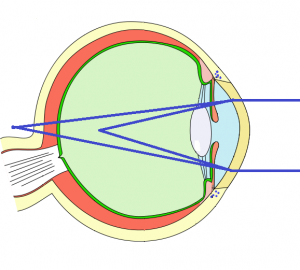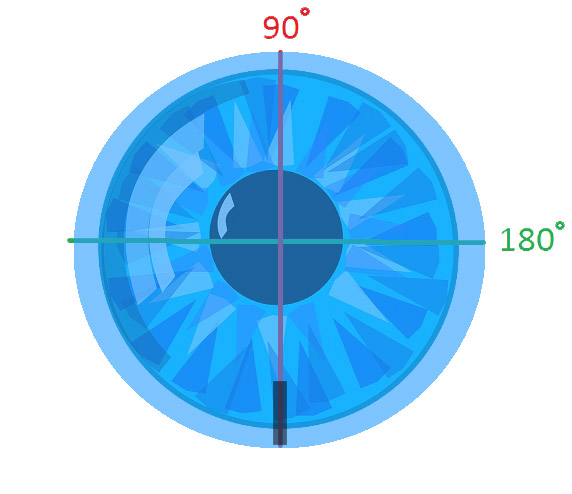Astigmatism is one of the most common, yet least understood conditions for patients. This is partly because it can be difficult to put into words (even more difficult to explain in writing) and it takes time to it explain well. For that reason, optometrists will often brush it off or just use a not-so-helpful analogy like: “Your eye is shaped like a football”… which probably raises more questions than it answers.
So What is astigmatism?
I will do my best to explain it below.
We first have to understand some very basic concepts in visual optics. Stay with me here, it’s not as bad as you think!
- We see because light from the outside world enters our eye and stimulates the retina.
- We see clearly when our eyes focus said light directly onto the retina.
- The eye has 2 parts that focus light: the cornea, and the crystalline lens. Astigmatism is mostly due to the cornea, so we will forget about the crystalline lens for now.
- The cornea focuses light because of two simple properties: it is transparent, and it is curved. Astigmatism is related to the curvature of the cornea, so we can forget about the transparency for now.
- When the cornea only has a single curve all the way around, it is described as being spherical. That will cause light to be focused the same amount in all directions. This creates a single point of focus as seen in the image below. When that is the case, there is no astigmatism present.

Light comes to a single point of focus within the eye. - However, when the cornea has two different curvatures, it losses its spherical shape and becomes more oval-shaped. This is where the football analogy comes in. When the cornea has two different curvatures, each curvature will focus light differently and give rise to two separate points of focus within the eye. This can be seen in the picture below. This is astigmatism.

Light forms two separate points of focus within the eye.
Note that oval-shape of the cornea with astigmatism in the pictures above cannot be appreciated because they are 2-D pictures of a cross-section of the eye.
When astigmatism is present, glasses or contact lenses must be placed in front of the eyes to counter balance the two separate curvatures of the cornea. This allows the light to be focused on the retina at a single point instead of two, which is what we need in order to see clearly.
Astigmatism is not a disease! It is a refractive condition, just like nearsightedness and farsightedness are. In fact, most people have some degree of astigmatism. Depending on the person, a small degree of astigmatism on its own does not have to be corrected. Only when it becomes moderate-high does it create enough sufficient blur to require glasses or contact lenses.
Wearing contact lenses for astigmatism is not necessary until the astigmatism reaches a certain level (a cylinder value of -0.75 or higher). Unfortunately, if your astigmatism is too high, you may not be able to wear contact lenses because the range of prescriptions available in contact lenses is limited.




2 Responses
Peggy Menke
Hello, Julie. Thank you so much for this valuable information. I was told I have a slight astigmatism in my left eye and have been wearing glasses for the last 5 years. I never really understood why this happens, but because of your information I know now. Thanks again for sharing this!
Julie
Hi Peggy!
Thanks so much for the comment!
I’m so happy that you read this and got something out of it. I wasn’t sure I could explain in a way that would make sense. I really appreciate your feedback :)
Julie